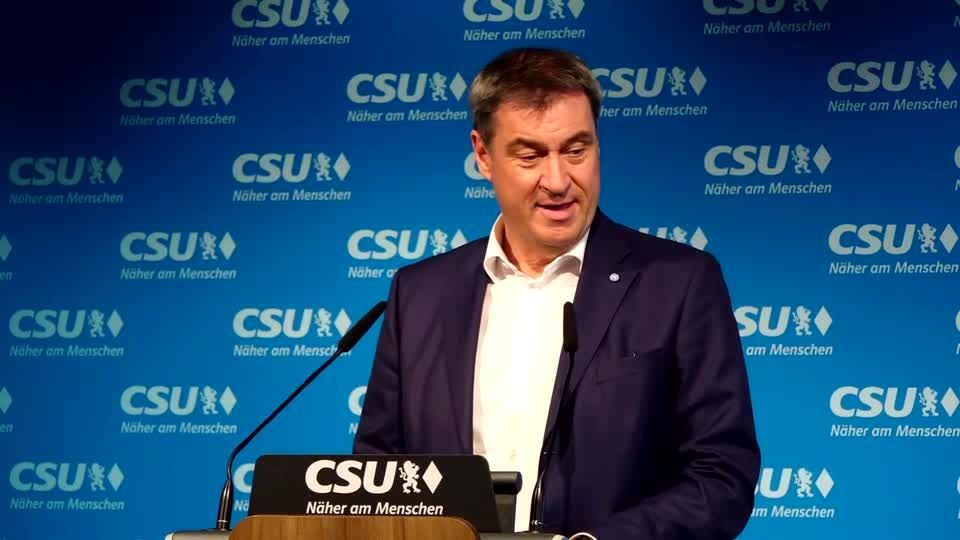fact check
100 days nuclear phase-out: Is Germany dependent on electricity imports?
Power lines in front of the Emsland nuclear power plant (archive photo)
© Sina Schuldt / DPA
Since the last three nuclear power plants went offline, Germany is said to have become much more dependent on electricity imports. But is that really true? A fact check.
The historical step was exactly 100 days ago on Monday: On April 15, the last three nuclear power plants Isar 2 (Bavaria), Neckarwestheim 2 (Baden-Württemberg) and Emsland (Lower Saxony) finally went off the grid. Since then, some like to paint the specter on the wall, Germany can no longer produce its electricity needs independently.
Claim: With the nuclear phase-out, the Federal Republic has made itself largely dependent on foreign countries for its power supply.
Rating: Wrong.
Facts: The CSU castigates the federal government’s energy policy and denounces the traffic light as making Germany more dependent on other countries when it comes to energy issues. AfD faction leader Alice Weidel even put forward the thesis at the beginning of July: “Our European neighbors have to cover a whopping 82 percent of our electricity needs.” But that is nowhere near the truth.
The accusation is mainly based on the number of days on which Germany imports electricity. The fact that this value increased in the second quarter of 2023 compared to the first (when the nuclear power plants were still connected to the grid) should serve as evidence of the alleged dependency. However, this value in itself has no meaningfulness about the amount of electricity actually imported and its share in the total electricity generation.
Germany is part of the European electricity market
The Federal Republic of Germany has been trading with other EU countries in matters of electricity within the framework of the European energy market for decades. The mutually desired cooperation between the countries should make it possible to save money and emissions. This means that electricity is both imported and exported – and thus passed on within the confederation of states to where it is needed.
There are times when Germany’s electricity from its neighbors is cheaper than that produced here. Above all, electricity from renewable energies is becoming cheaper and cheaper compared to the conventional variant. In these cases, a possible import is not a sign of dependency, but an economic decision.
For around 20 years, Germany has been exporting more electricity than it gets from other countries. In 2022, for example, an export surplus of around 26 terawatt hours (TWh) was achieved.
Since April 2023, on the other hand, imports have actually predominated. And the number of days on which there was an import surplus is also much higher than in the first quarter. However, this does not necessarily say anything about the dependency after the nuclear phase-out, or that Germany has to get most of its electricity from abroad.
New kilns
Germany is phasing out nuclear power – in complete contrast to other countries
What about the German electricity trade in 2023?
According to data from the Fraunhofer Institute for Solar Energy Systems (ISE), Germany supplied around 35.3 terawatt hours (TWh) of electricity to other European countries up to July 21 this year. On the other hand, the Federal Republic received 36.2 TWh from its neighbors. So far, the import surplus in 2023 is just around 0.9 TWh.
For comparison: The public net power generation in Germany (i.e. without the self-sufficiency of industry) is around 247 TWh in the same period.
Electricity trading before and after the nuclear phase-out
According to the Federal Network Agency, Germany delivered more electricity to its neighbors than it imported in the first three months of 2023. In January the balance was an export surplus of 4.0 TWh, in February 2.8 and in March 2.1. Since then, however, imports have predominated: In April, 0.4 TWh more electricity was imported than exported, in May 3.5 and in June 4.0.

The fact that Germany imports more electricity than it exports in the summer is not a unique selling point for the current year. Even earlier, when a significant proportion of electricity was still being generated from nuclear energy in Germany, there was already an import surplus in the warmer months – including in 2010, 2011, 2014, 2019, 2020 and 2021. However, it is also true that the balance in 2021, for example, did not reach the same level as in 2023.
In summer, due to the milder temperatures, the demand for electricity falls and at the same time the supply of solar energy across Europe increases. This usually makes the price for imports cheaper.
In its report on the first half of 2023, the Fraunhofer Institute for Solar Energy Systems explains that the quantities lost from the three nuclear power plants were compensated for “by lower consumption, reduced exports, increased imports and the expansion of solar and wind capacity”. By the time they were shut down on April 15, the three reactors had produced 6.7 TWh that year.

